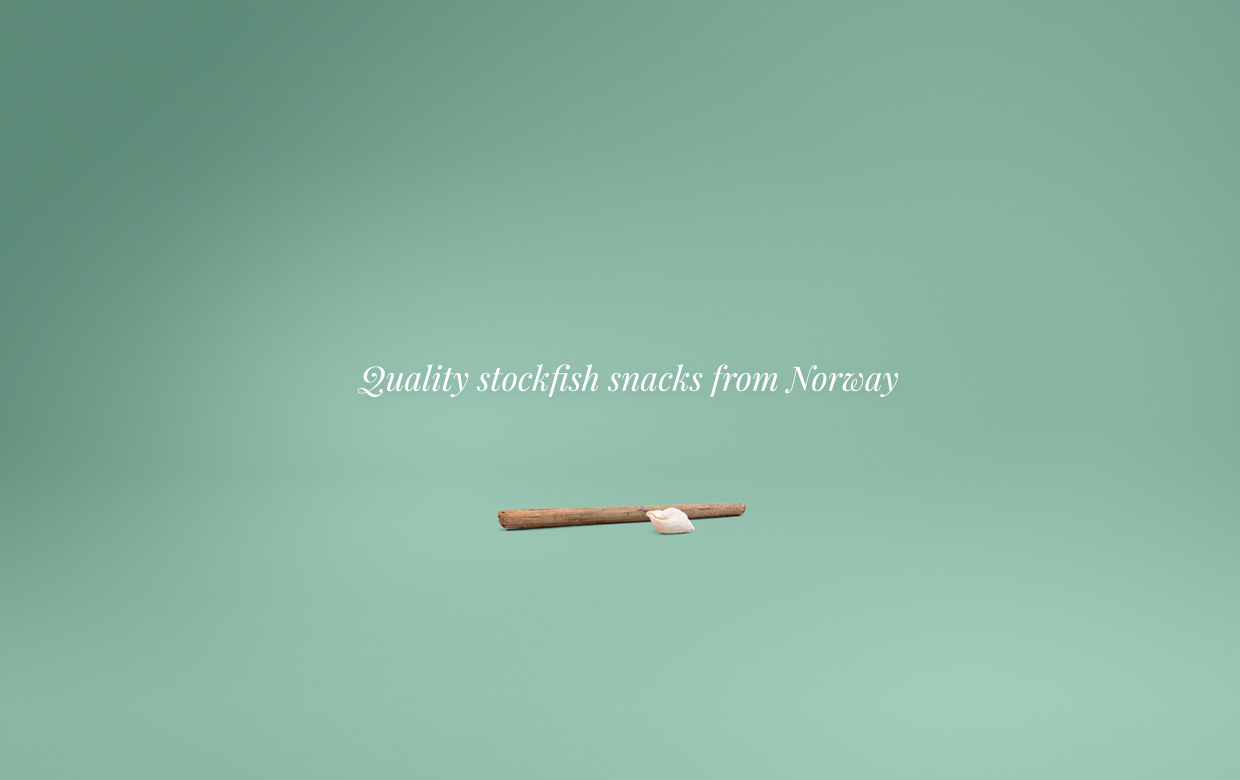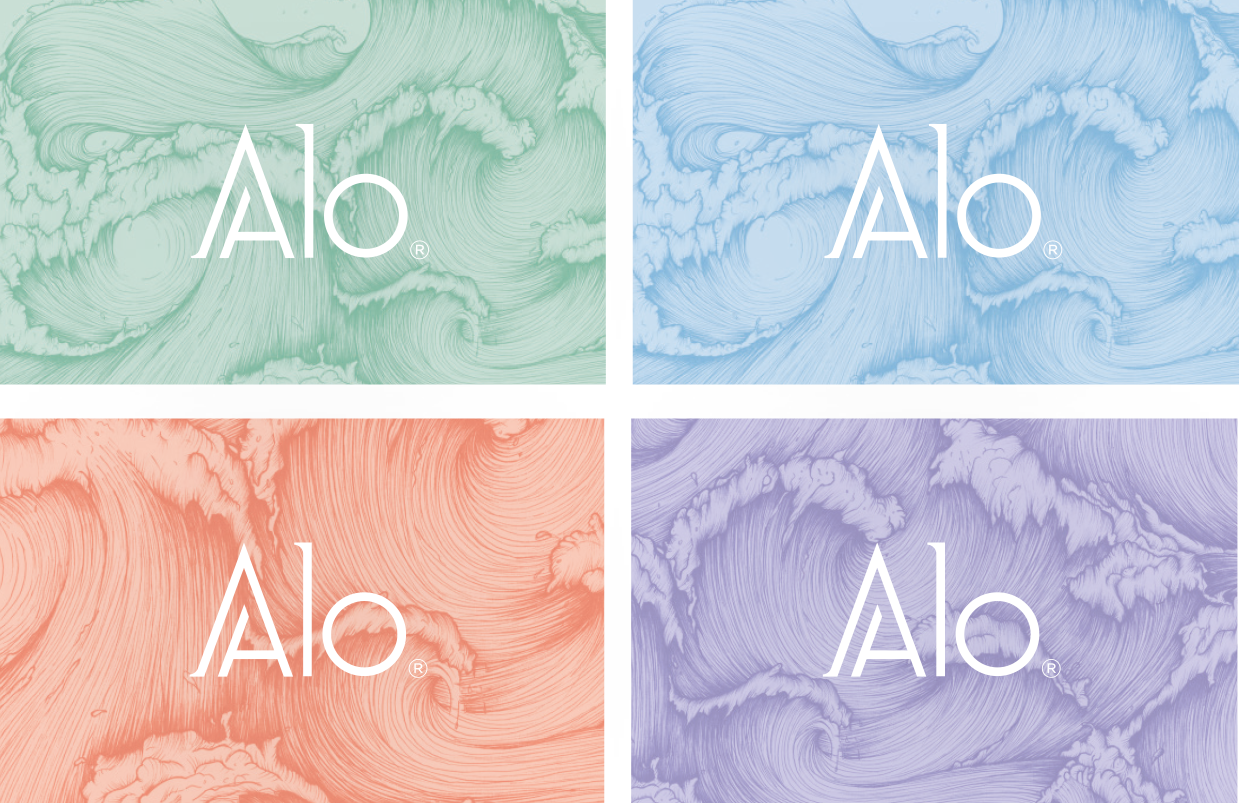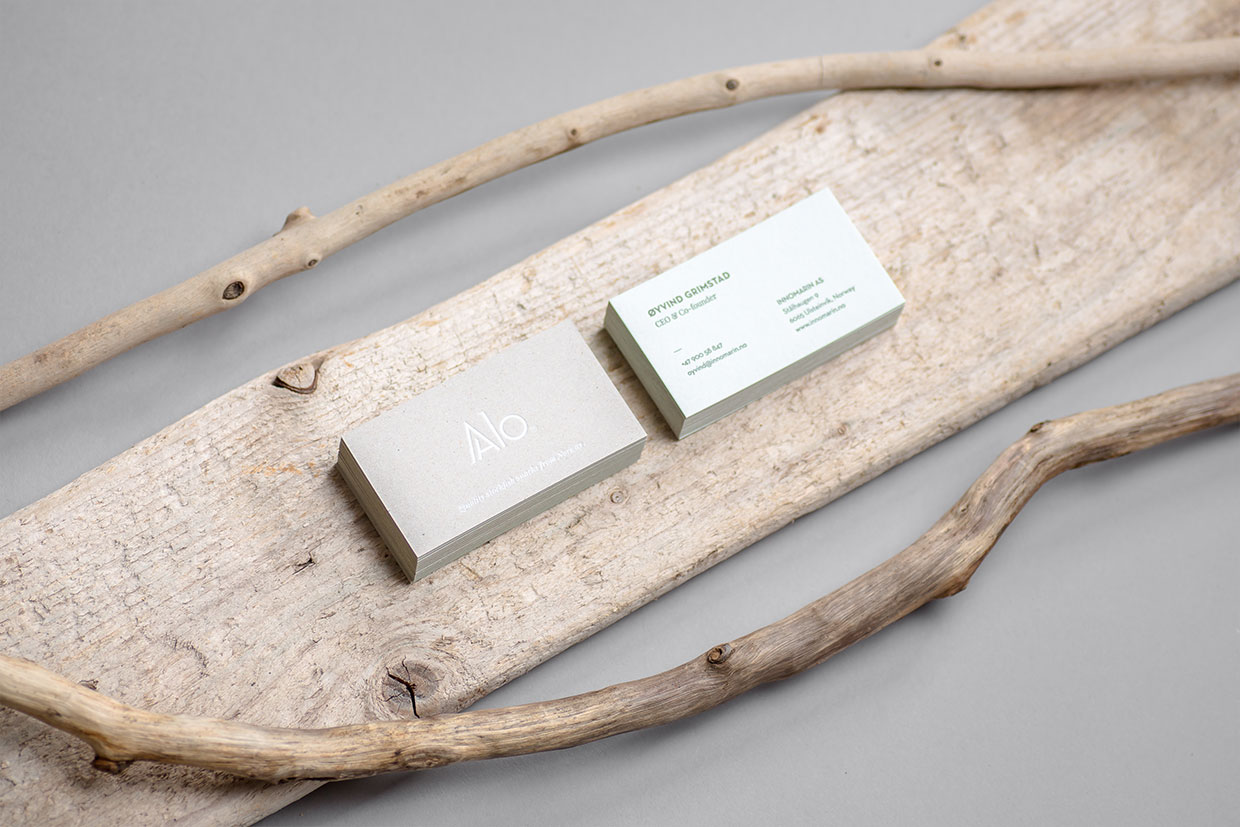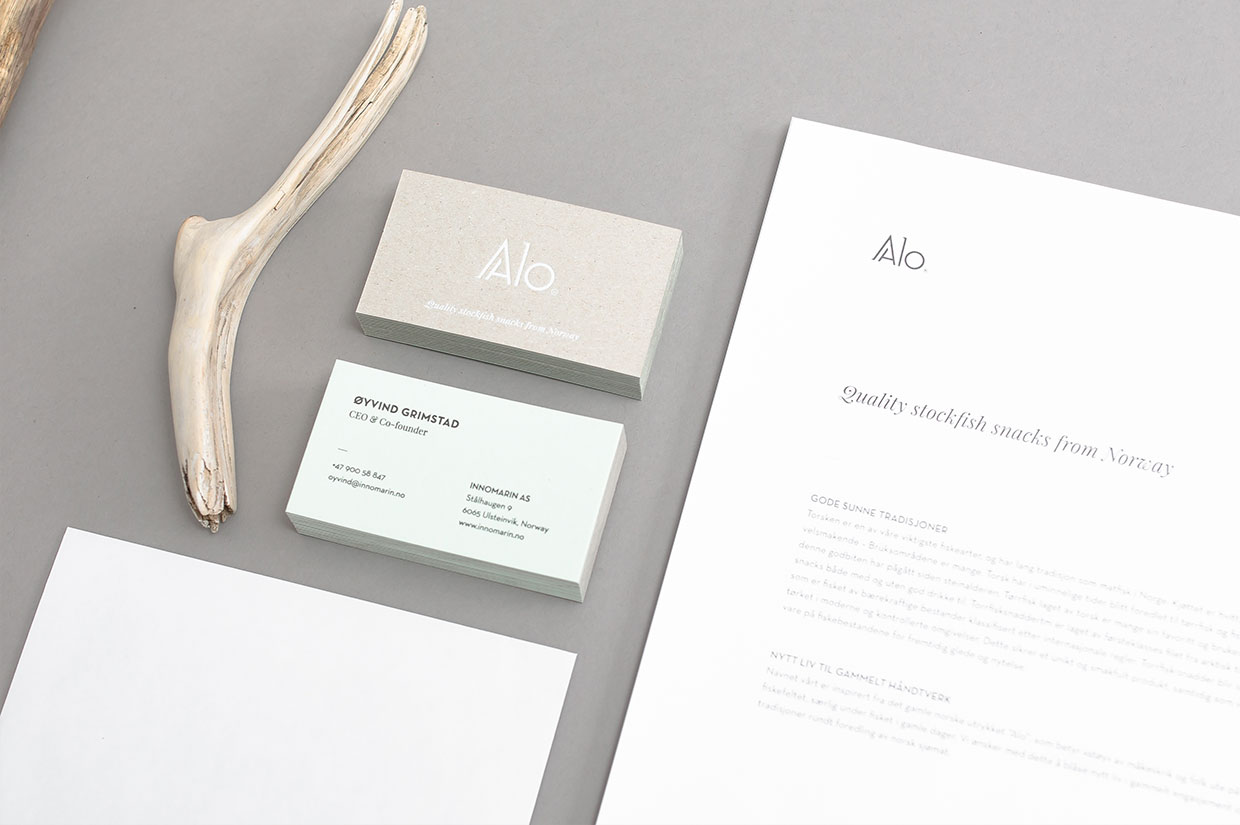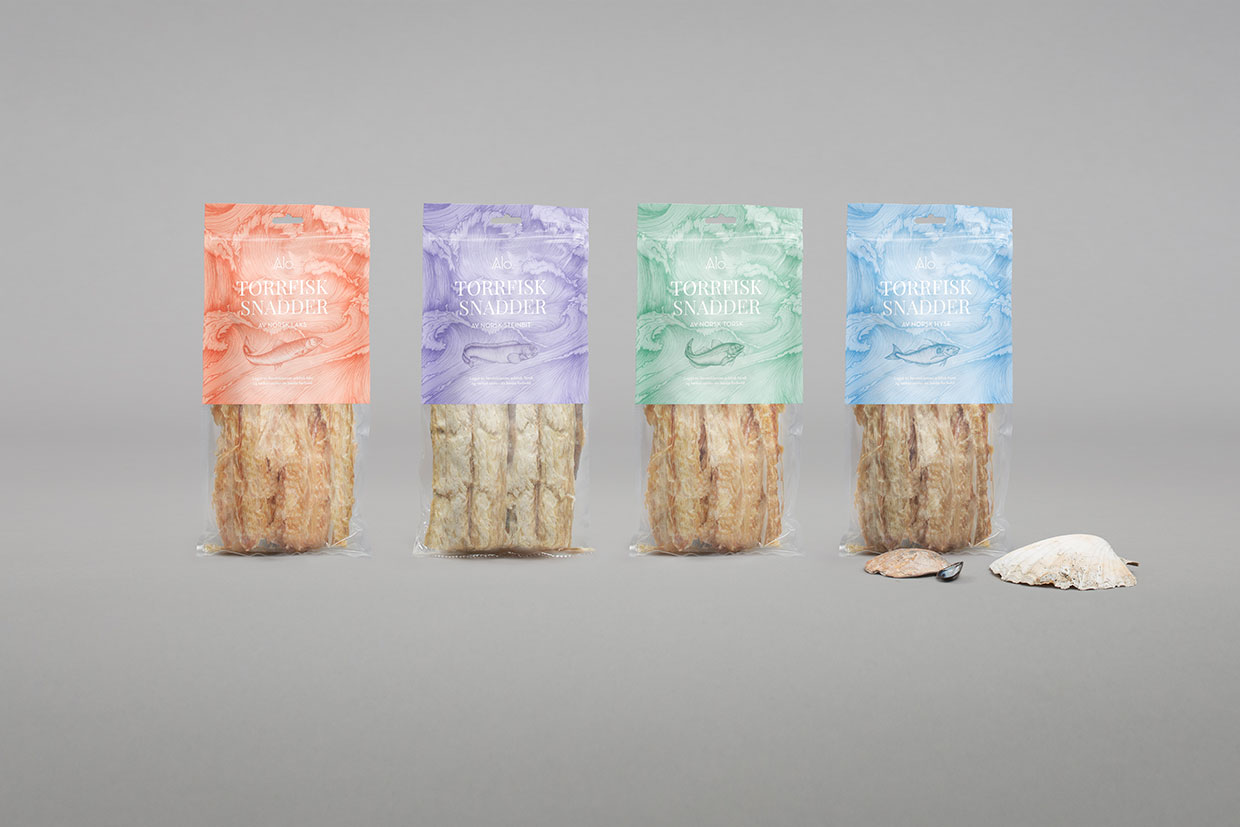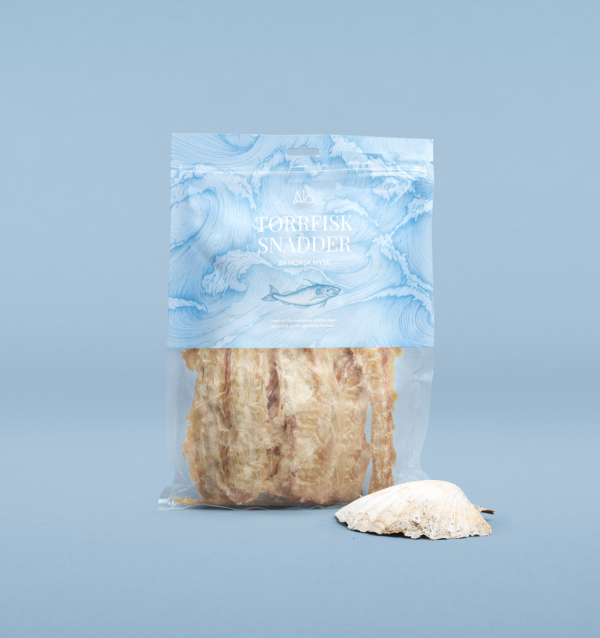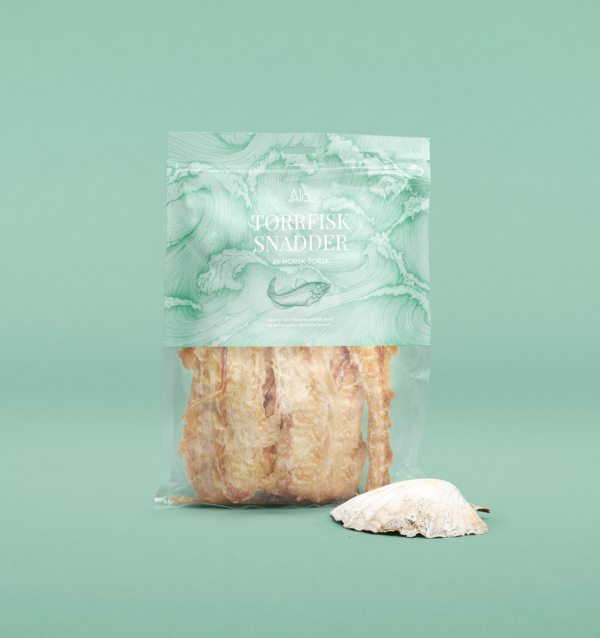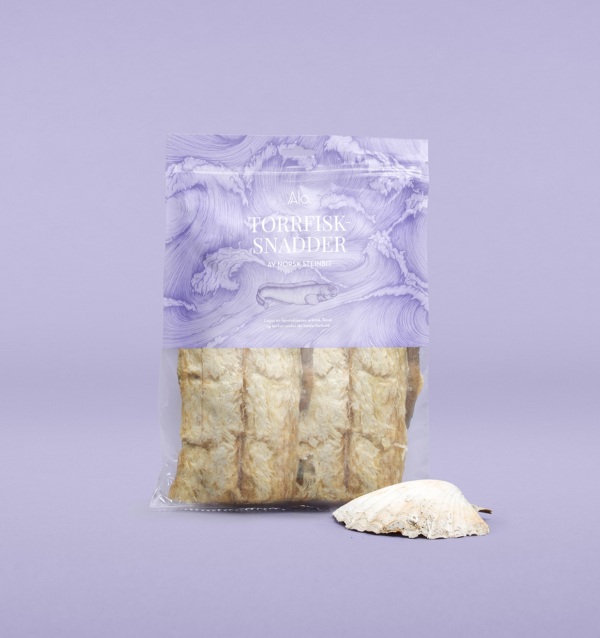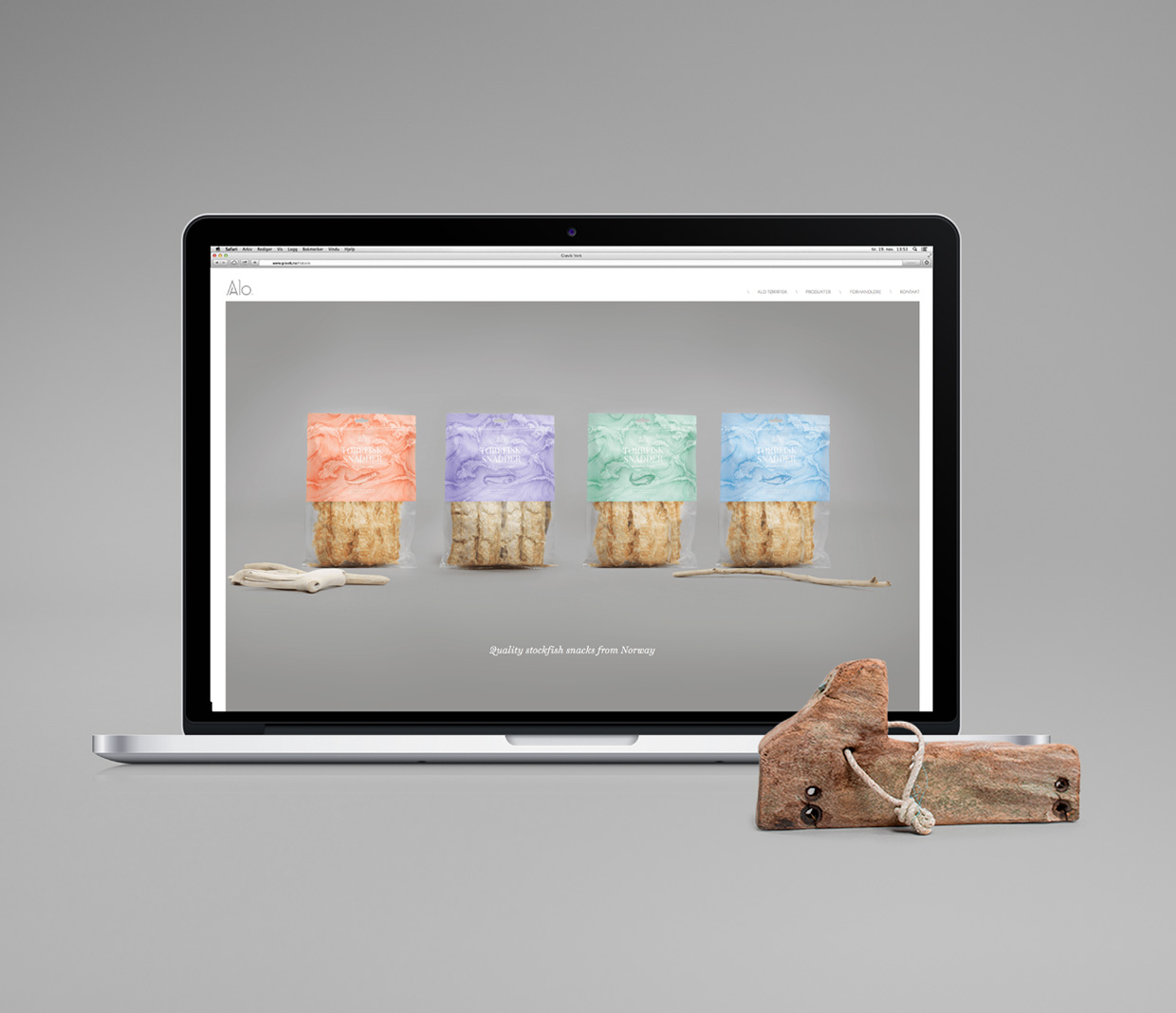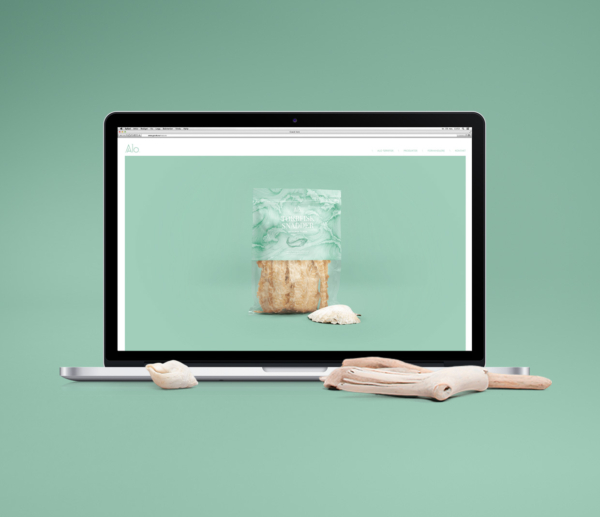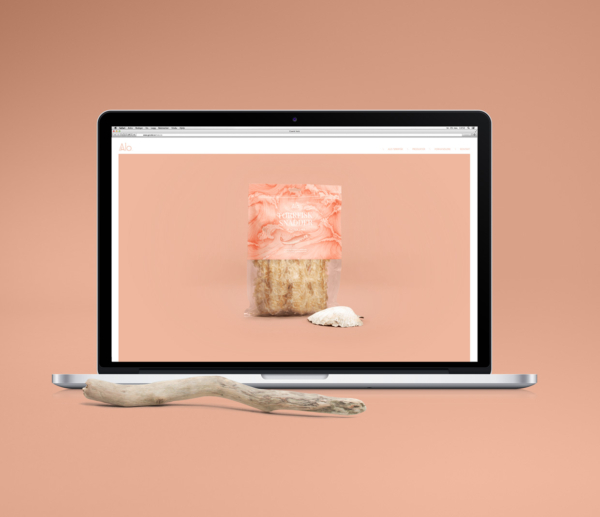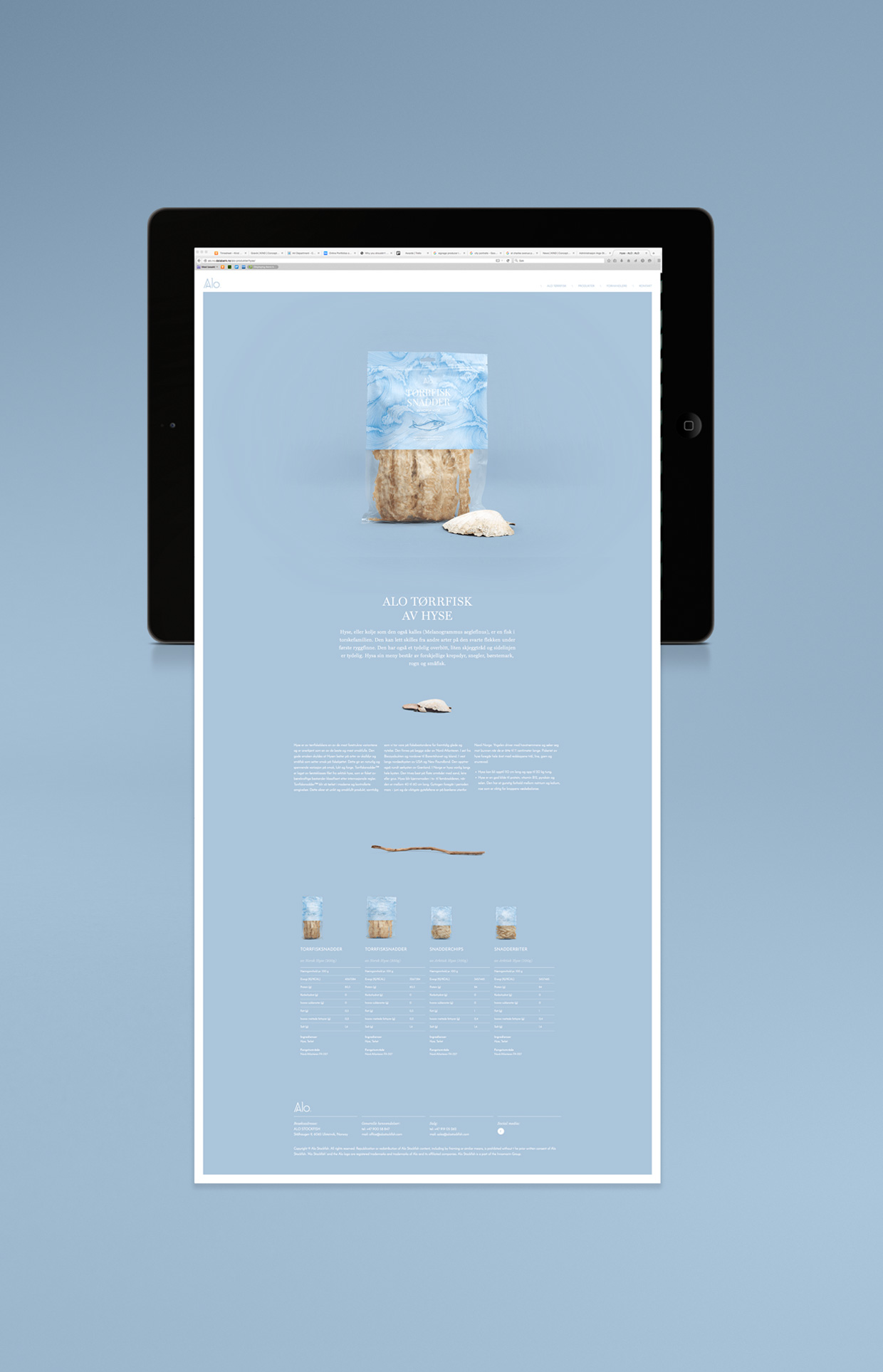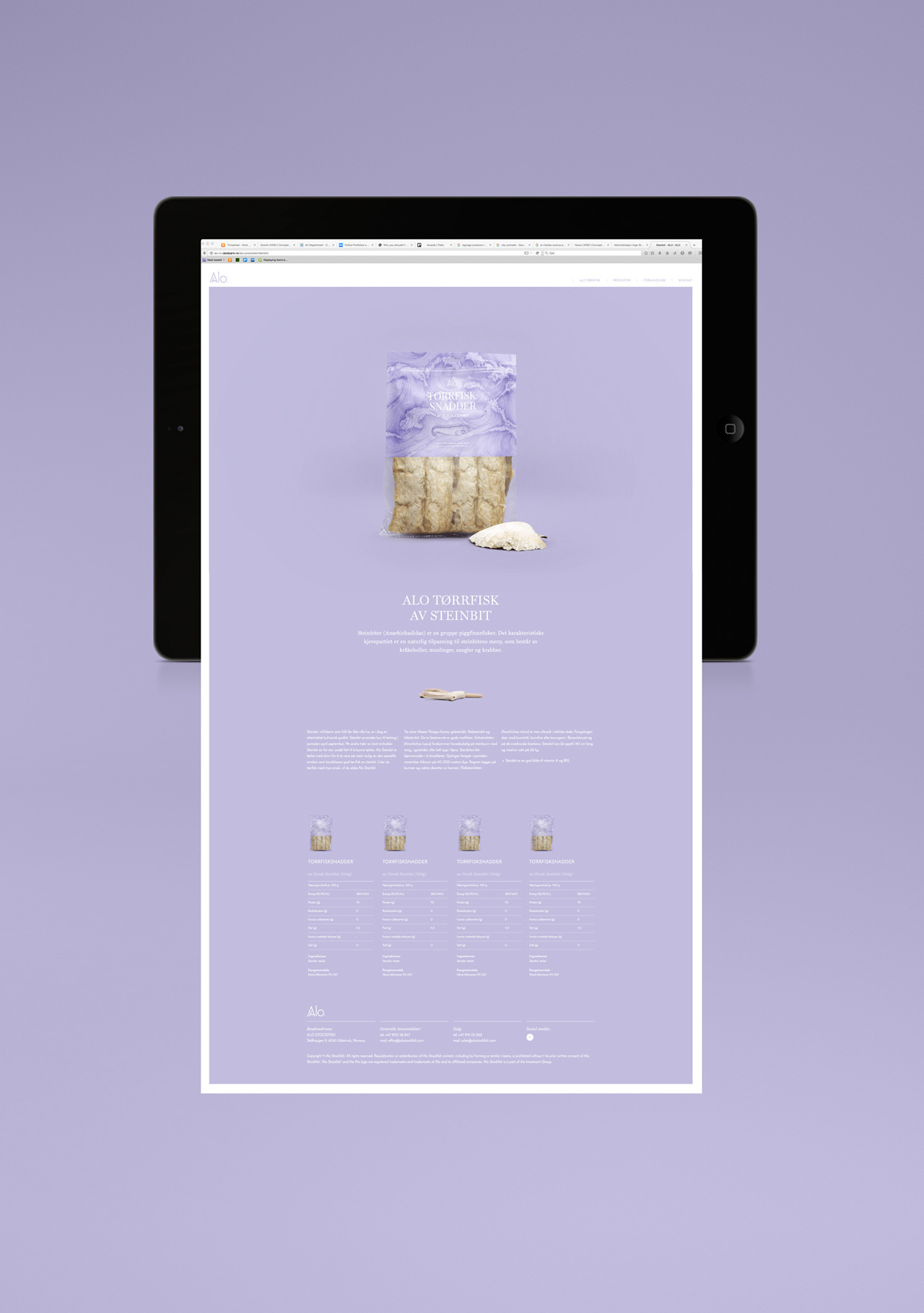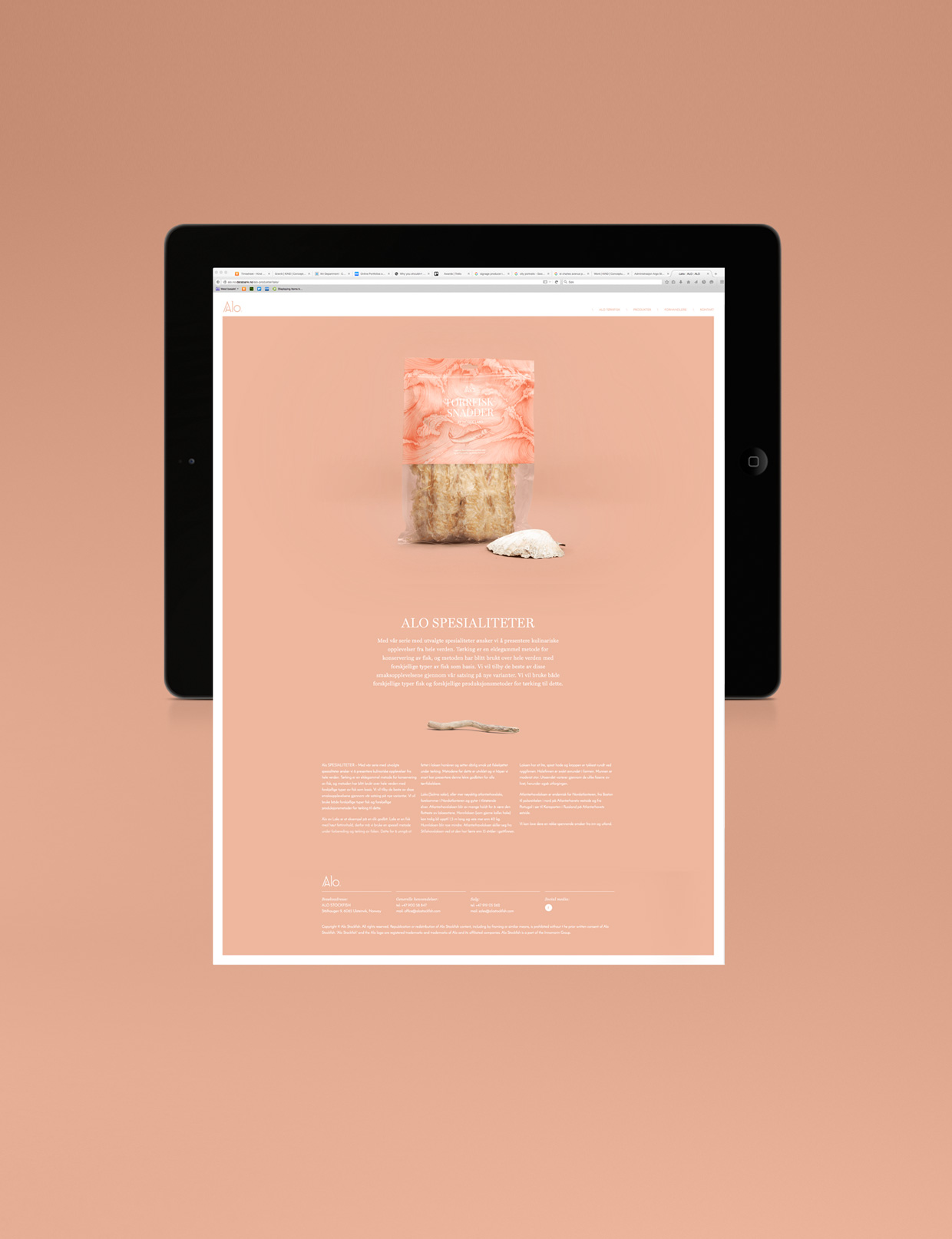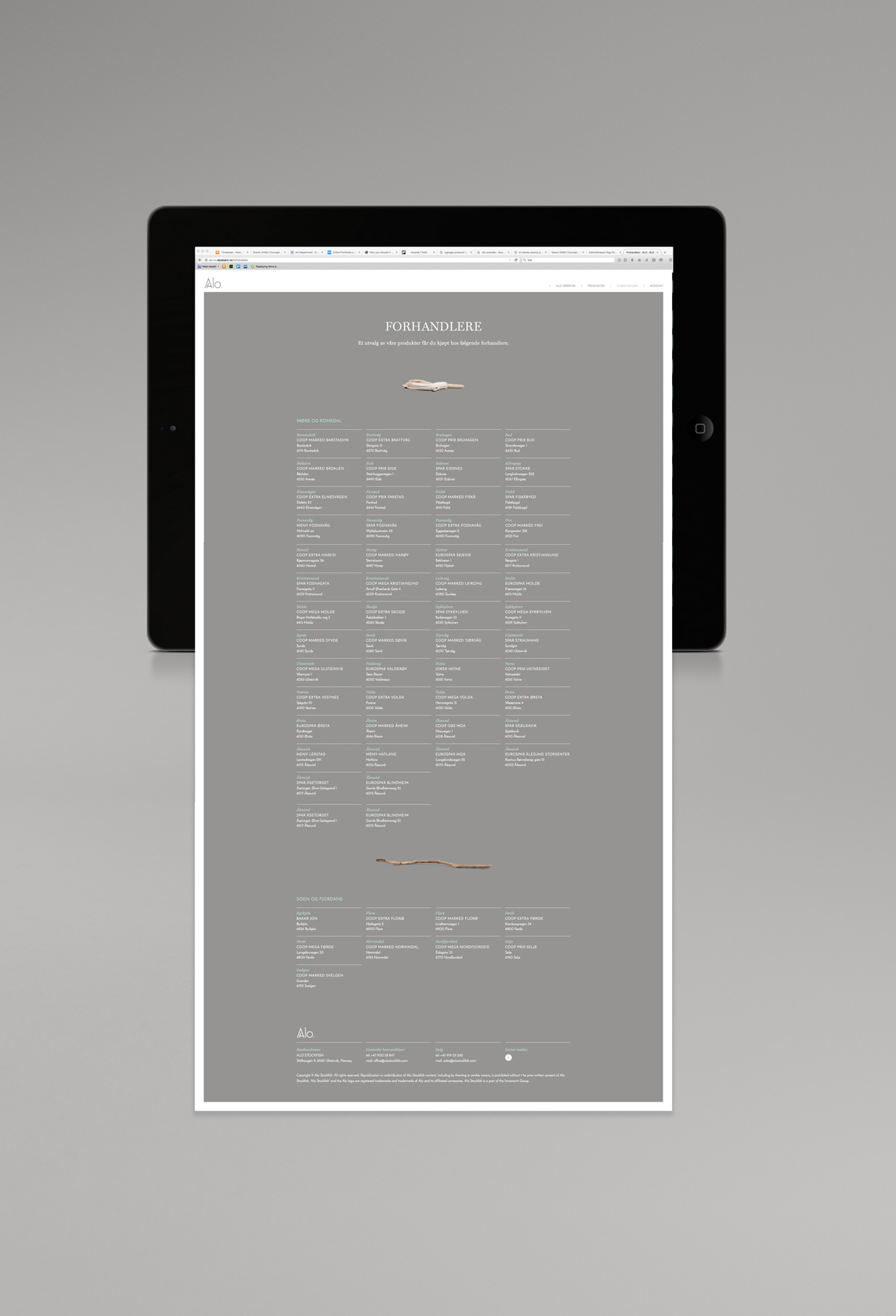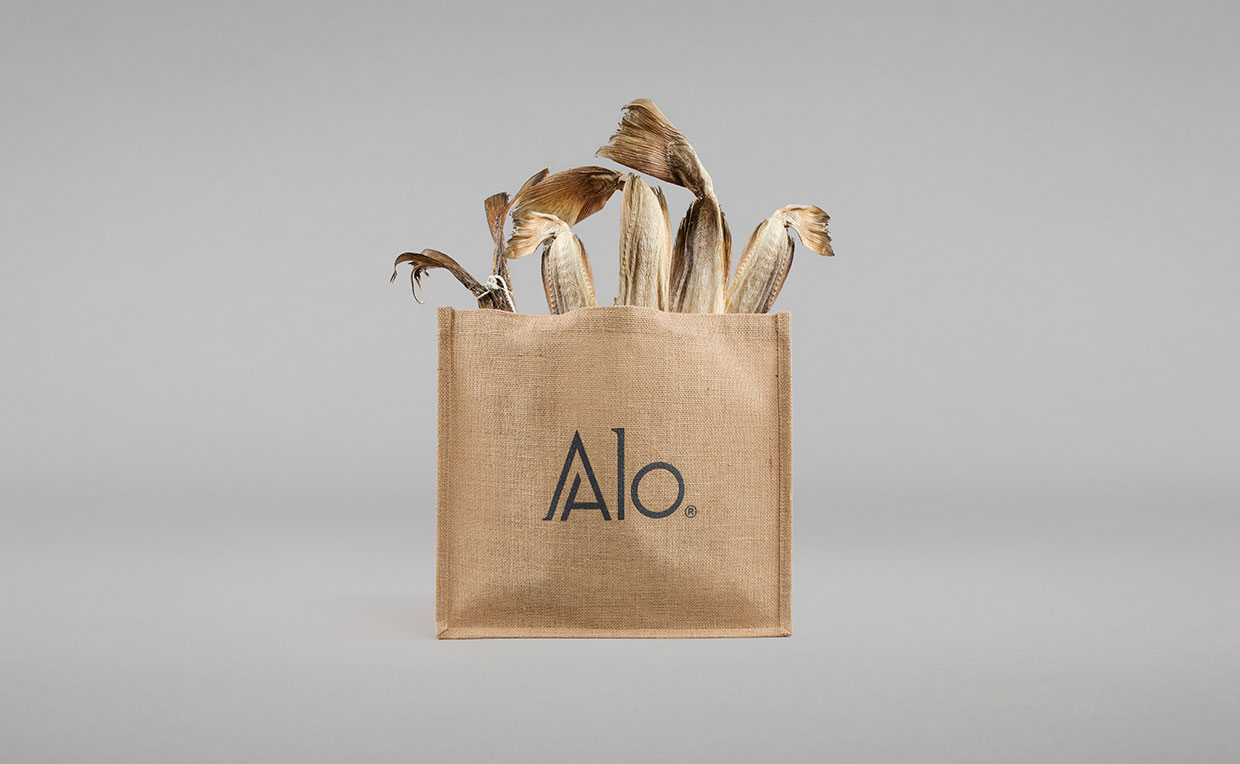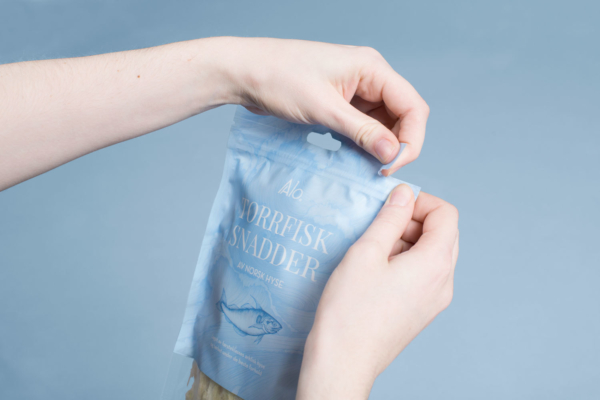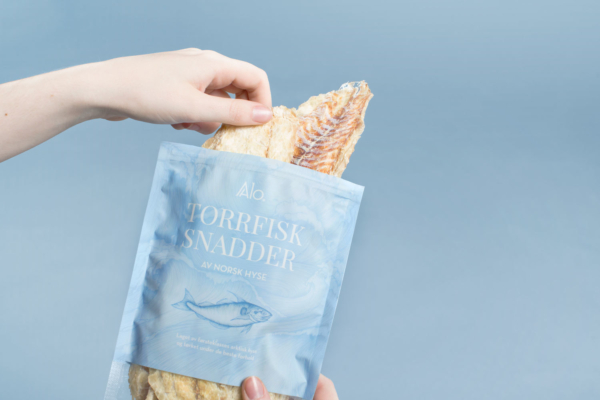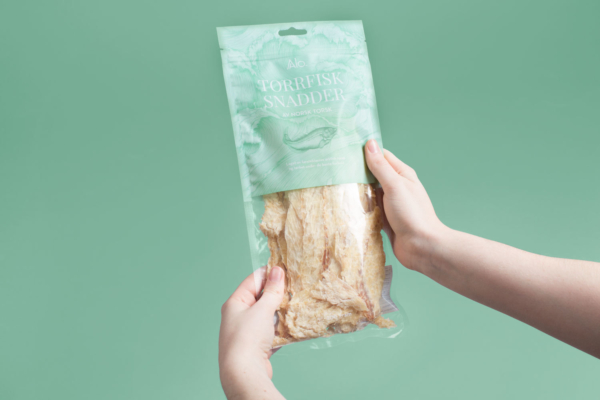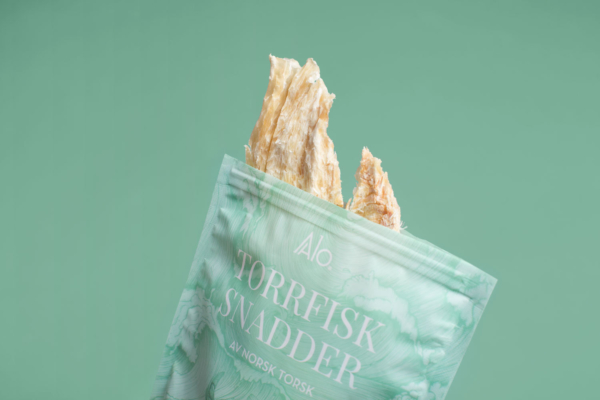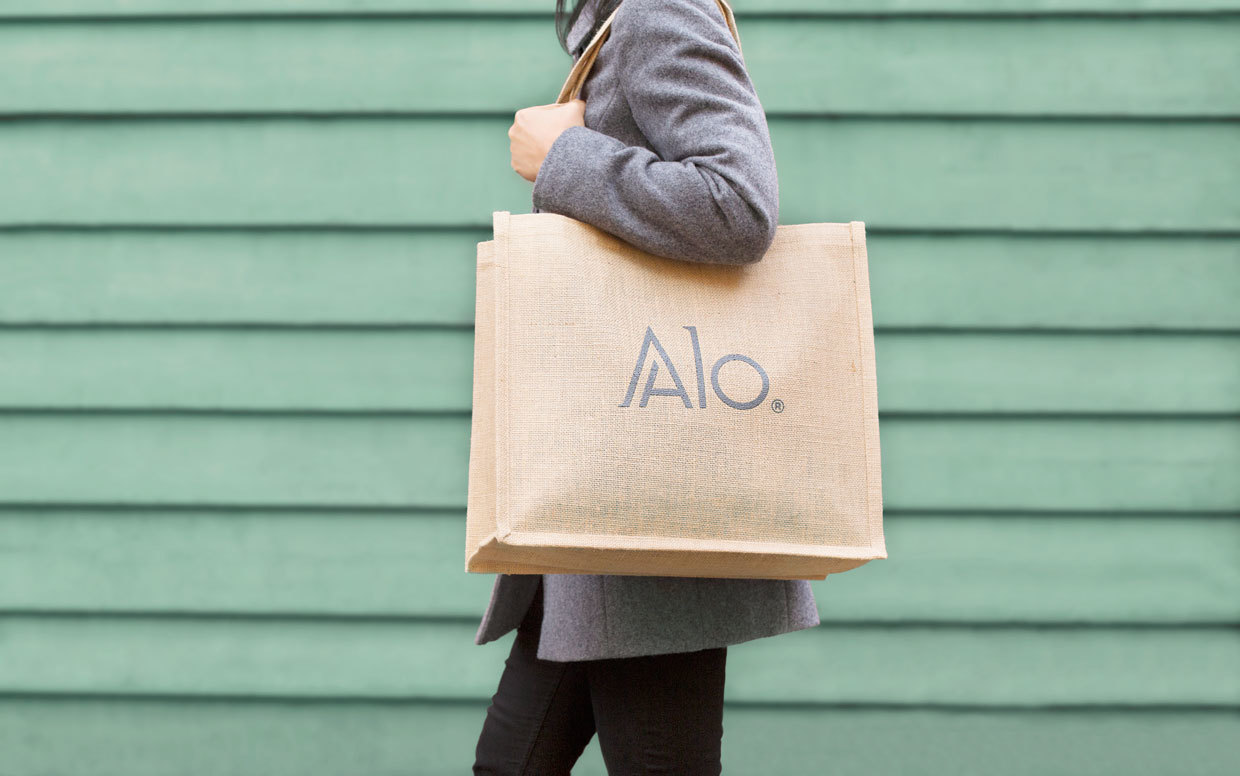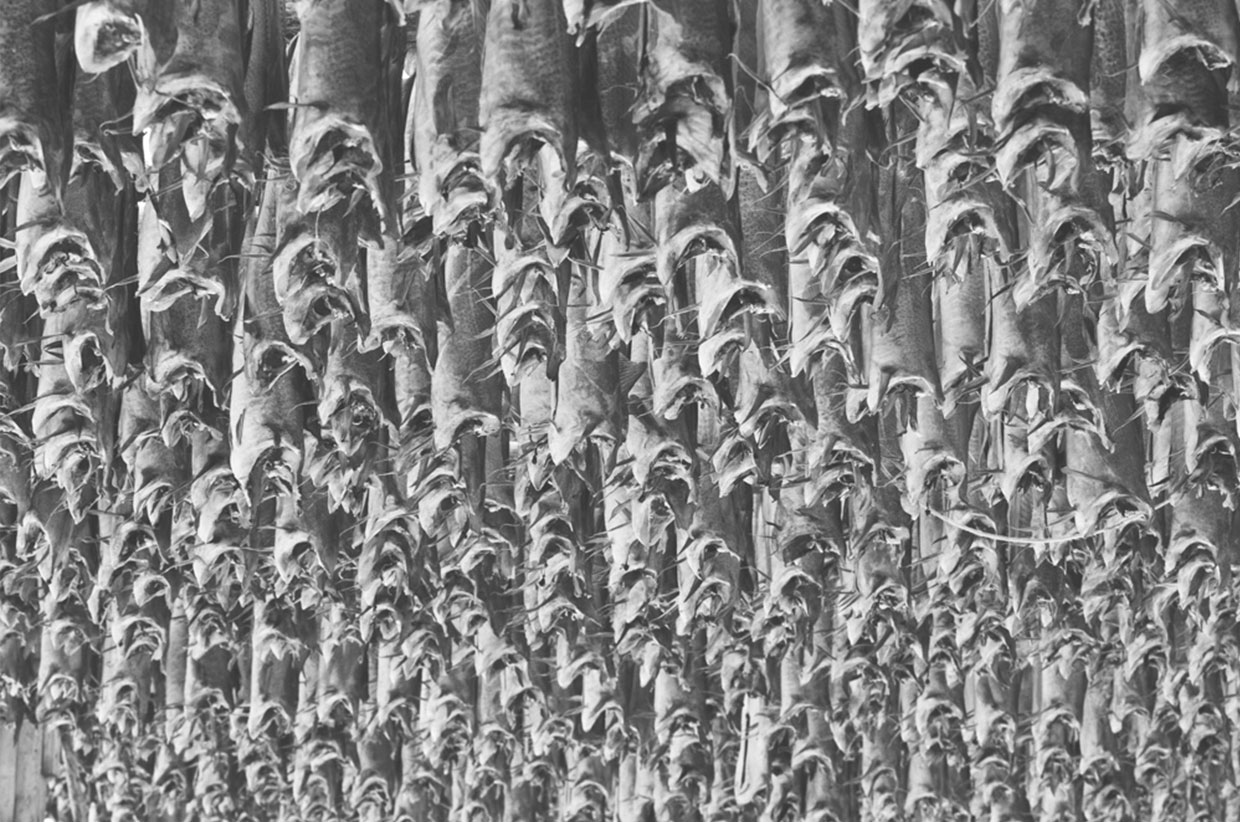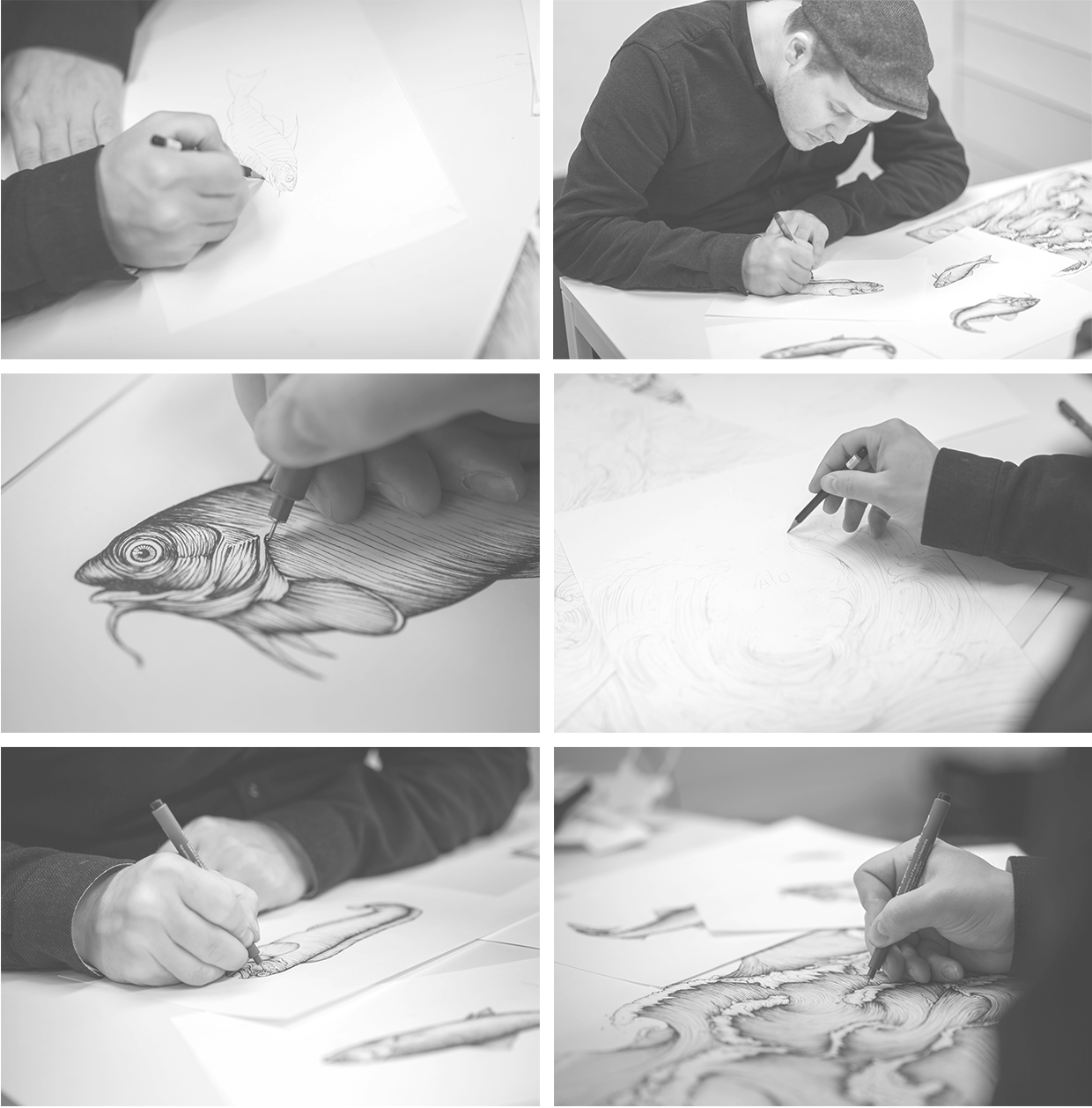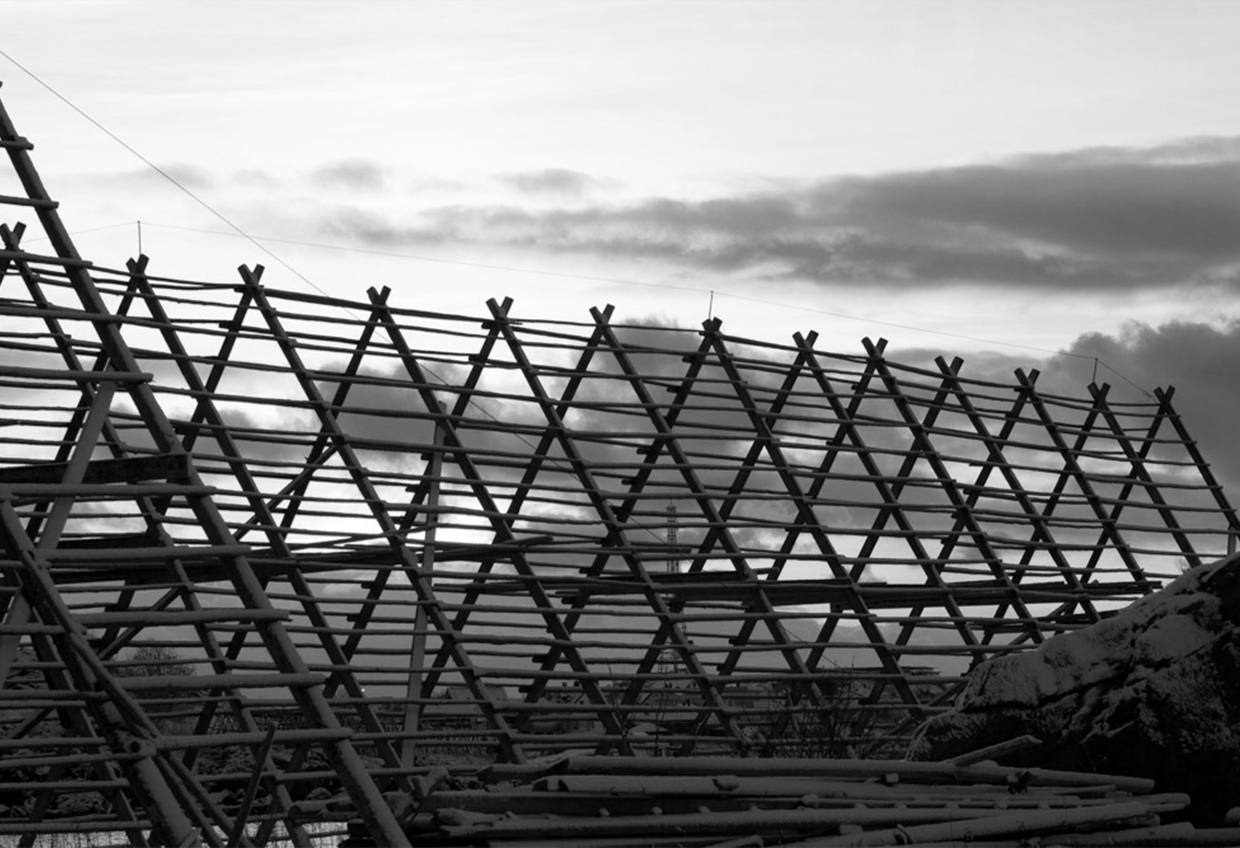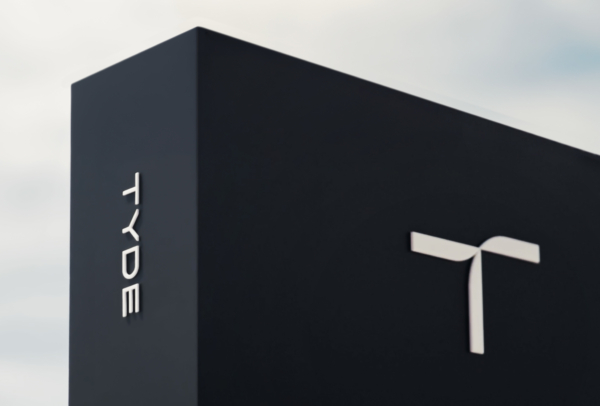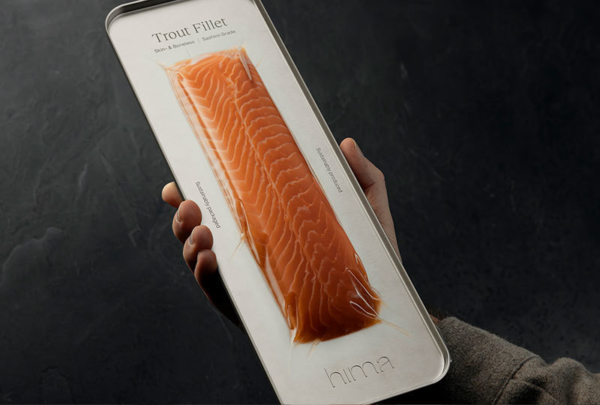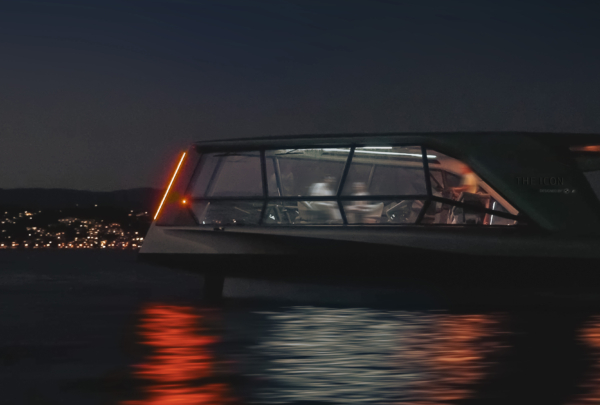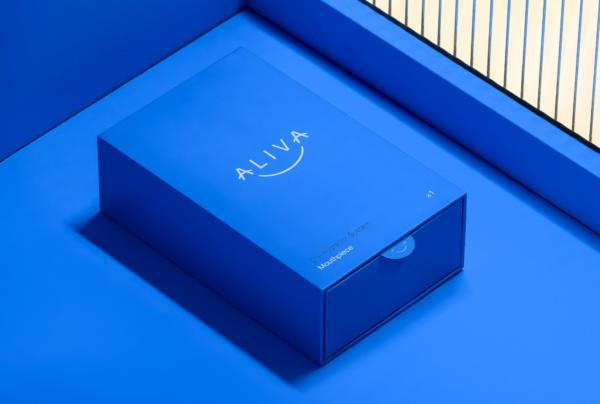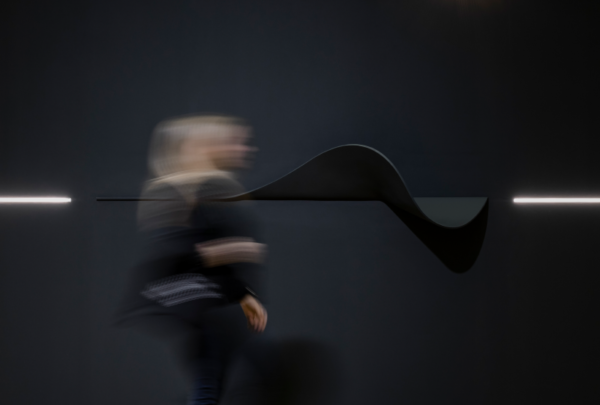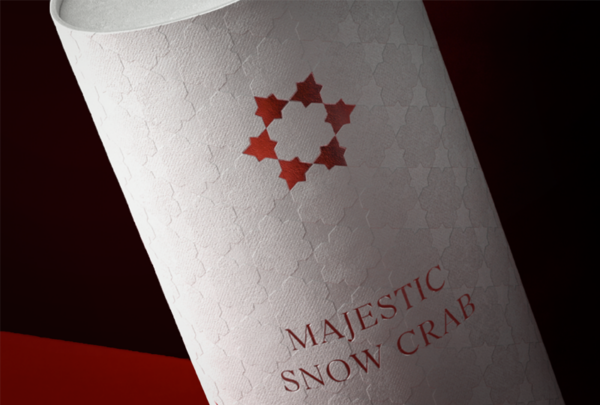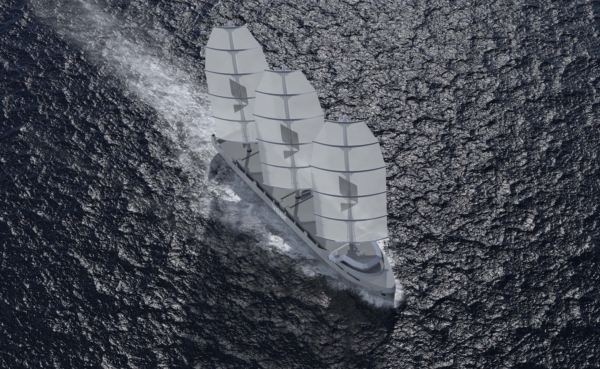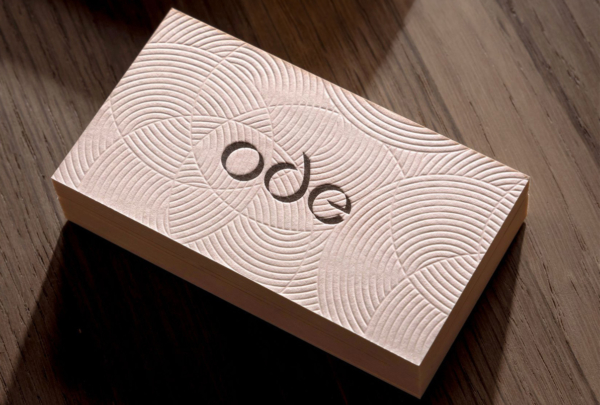Branding / Visual identity
Kind has developed a name and identity for Alo - an innovative, modern newcomer in traditional seafood.
The name Alo is inspired by the old Norwegian expression 'alo', which refers to the noise made by seagulls and people out on the fishing grounds, particularly during fishing in the old days. Alo wants to breathe new life into old methods and traditions relating to the processing of Norwegian seafood.
Quality and innovation
Alo Tørrfisk is part of Innomarin, a young company, but with roots dating back to the rich fisheries and processing traditions along the Norwegian coast and in Arctic waters. Alo's products reflect the company's values, which focus on sustainability, quality, traditions, natural tastes and innovation.
'Vision'
Øyvind Grimstad, CEO and Co-founder at Alo, said: 'From day one, our vision has been to revitalise and promote good, traditional seafood products so that they can gain the place they deserve in the market. The products are intended to represent good quality and traditions, so that they justify their position and price in the market. In order to achieve this, it is necessary, in addition to ensuring that the product is of high quality, to have a strong focus on brand building and good design. Its profile and design must stand out from the competition and appeal to the primary target group, while at the same time capturing the interest of potential new customers.
'Excellent' results
'Kind has accepted this challenge, and the results are excellent. We now have a modern profile and design that clearly stands out, at the same time as it emphasises our products' historical roots. Kind works in a proactive, positive and creative way that really appeals to us. Kind's positive attitude and good humoured staff make them easy to cooperate with, and we look forward to further developing our concept together with Kind.
First class
Alo's production facility is at Stadlandet in Norway, at a local family enterprise with long traditions that prides itself on producing first-class natural snacks made from dried fish. Alo Tørrfisksnadder – dried fish snacks – are produced from first-class fillets that stem from sustainable fisheries. The fish are filleted on board the fishing boats, using methods that ensure that their culinary properties and good natural flavour remain intact. Upon delivery, each individual fillet is manually checked before being prepared for drying. In order to ensure as good a product as possible, the drying process has been moved to a modern drier in a controlled environment that results in an even and optimal drying process. After drying, the fillets are 'gently' pounded. This is important in order to preserve as much as possible of the good flavour 'inside' each fillet.
Immediately after pounding, the fillets are packed in bags with a practical opening and closing function that preserves their quality. Dried fish are unsalted fish that are dried naturally by the sun and wind on drying racks. Drying food is one of the oldest know preservation methods, and dried fish keep for years. There is a long-standing tradition of drying fish in Norway, and the Norwegian word 'torsk' (cod) comes from the old Norse word turskr, which means turrfiskr (dried fish). In recent times, the drying process has been moved indoors to special drying facilities. Using modern drying facilities makes it possible to dry fish all year round, while at the same time being able to control the factors that produce good dried fish.
Most dried fish that is dried naturally is produced in the Lofoten islands, where the drying conditions are most stable. The spawning cod (skrei) fisheries in Lofoten have always taken place in the best drying season. The fish hang on racks for about three months. Once the fish has dried, it is matured for two to three months indoors in a dry and airy environment.
Rich
During the drying process, around 70–80% of the water in the fish disappears. The dried fish still has the same nutrient content, but in more concentrated form, and it is rich in proteins, vitamin B, iron and calcium. After being sorted by quality, most of the dried fish is exported to Italy, Croatia and Nigeria. The fish is soaked in water before being used in many different dishes. It is regarded as a delicacy in these countries. In Norway, dried fish is mostly used as snacks or in the production of lutefisk (cod treated with lye). It is not used much in ordinary cooking.
'We now have a modern profile and design that clearly stands out, at the same time as it emphasises our products' historical roots. Kind works in a proactive, positive and creative way that really appeals to us. Kind's positive attitude and good humoured staff make them easy to cooperate with, and we look forward to further developing our concept together with Kind.'
Øyvind Grimstad CEO & Co-founder
